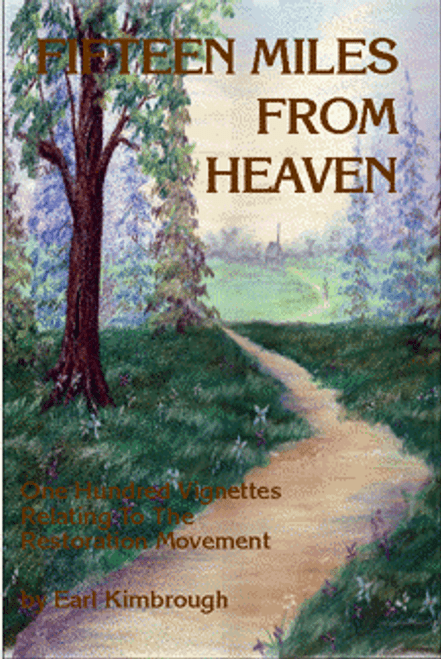The author and my dear friend, gospel preacher Earl Kimbrough, is an excellent student of what is commonly called “Restoration History,” that is, the history of the movement in this country to call men and women out of denominationalism and back to the Biblical pattern. While identifying himself as a “moon-lighter following a beloved hobby,” Earl wrote in the Introduction, “The vignettes in this book came from this avocation. Most of them originally appeared in religious journals edited by some faithful men….My original purpose in submitting these historical anecdotes for publication was to use interesting stories of the Restoration to teach important lessons, and to encourage Christians to become more familiar with our Restoration heritage. That is also the purpose of this collection of these stories.”
Earl’s extensive research and study, along with his wry but witty writing style, have resulted in these absolutely delightful stories about some of the men and women who pioneered the restoration of New Testament Christianity in the United States and others who continued to keep the movement alive. The title of the book comes from the first account, in which Moses E. Lard kept a preaching appointment at Richmond, MO, in 1853. A black man named Dick, a brother in Christ, had come fifteen miles to hear Lard preach and brought his young master Thomas, who, Dick said, might be a Christian if he knew how. Lard preached for an hour and one half. When the invitation was extended Thomas went forward, made the good confession, and was baptized. Lard wrote, “Poor Dick was as near heaven then as he will ever be again till he reaches that blessed abode,” and Earl added that it was “because a chattel slave, who was also a bondservant of Christ, loved both masters enough to travel fifteen miles to hear the gospel.”
These narratives cover incidents in the lives of not only such well known figures as Alexander Campbell, Barton W. Stone, Moses Lard, Daniel Sommer, Tolbert Fanning, and T. B. Larimore, but also many lesser known individuals like Joseph A. Clark, V. M. Metcalf, David A. Nation (husband of Carry A. Nation of temperance fame), Justus M. Barnes, R. Wallace Officer, and many others. There is a biographical index to make the book more useful for historical study. In the Afterthought, Earl, while cautioning against living in the past, noted, “But lessons may be learned from the experiences of brethren in past generations, in their struggle to stake out and maintain the ‘old paths,’ that may be learned in no other way. We can be instructed by their teaching, find encouragement in their virtues, and take warning from their mistakes.” I highly recommend Fifteen Miles from Heaven.




 Back to Main Menu
Back to Main Menu


